| (insert your NIE or newspaper logo here) |
Weekly Online LessonOnline Lesson ArchiveGrade Level: 6-12
|
To Clone or Not to Clone
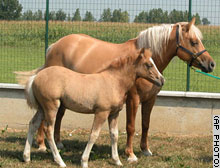 Another
breakthrough in genetics research was unveiled last week, rekindling
scientific and ethical debates worldwide.
Another
breakthrough in genetics research was unveiled last week, rekindling
scientific and ethical debates worldwide.
Italian scientists on Wednesday, August 6, 2003 announced that they had cloned the first horse from an adult cell. The cell was taken from the mother's skin and fused with one of her eggs. This means that her newborn baby is also her genetic twin.
The foal was named Prometea, after Greek mythology's Prometheus who was punished for stealing fire from the gods and giving it to humans.
The life of Prometea, now about 10 weeks old, started as an experiment with 800 eggs. Out of those, only 22 developed into seven-day-old embryos. Seventeen were transferred into nine horses. Out of the resulting four pregnancies, Prometea's was the only live birth.
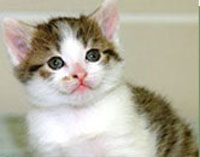 The
cloning of mammals began in 1996 with the birth of Dolly the sheep.
The next year, a mouse was successfully cloned, the year after that
a cow. Pigs were cloned in 2000, then a cat in 2002, and a mule born
around the same time as Prometea.
The
cloning of mammals began in 1996 with the birth of Dolly the sheep.
The next year, a mouse was successfully cloned, the year after that
a cow. Pigs were cloned in 2000, then a cat in 2002, and a mule born
around the same time as Prometea.
Prometea's success is just the latest milestone in the science and potential commercialization of cloning. Already the news is sparking debates over how this event could influence horse racing, for example.
Potential applications of cloning mammals are numerous. Will this lead to human cloning to provide children to infertile couples? Or maybe to grow personal replacement organs? Already, the futuristic scenario of replacing one's pet, played out in the 2000 movie titled, "The 6th Day," is a real service offered by Genetic Savings & Clone, Inc.
This week you'll find out how the science of cloning, as well as the ethical and social implications of it, could affect our lives in the near future — from health issues to food production to our relationships with pets and other animals.
The Cloning Revolution
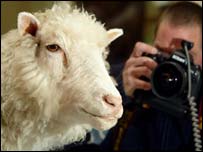 Begin
the lesson in The
Clone Zone at BBC. Read the introduction, then move through
the site using the Read On or Next prompts.
Click on any linked topic or term for a pop-up explaining it in detail.
Begin
the lesson in The
Clone Zone at BBC. Read the introduction, then move through
the site using the Read On or Next prompts.
Click on any linked topic or term for a pop-up explaining it in detail.
In the Clone Age, you'll learn about Dolly the sheep, the first mammal who was cloned from an adult cell and lived six years until her recent death. What may have been significant about the way she aged, including her health problems, and the age of the donor sheep?
Then find out why Cloning is hard. What percentage of cloning attempts fail and why? How do chemical tags affect genetic expression? Why would anyone want to clone a human? How does the research on stem cells fit into the notion of cloning?
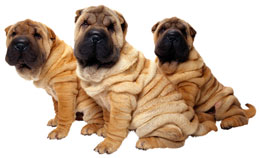 Go
on to explore reasons for cloning animals such as Clone
Farming, Pets,
and
Extinct & Endangered Species.
Go
on to explore reasons for cloning animals such as Clone
Farming, Pets,
and
Extinct & Endangered Species.
What are some of the challenges and dangers posed by each of these commercial applications? What might be some of the benefits?
Which applications may stir emotional and ethical debates the most? Which ones are perhaps the least contentious and why?
The Art & Science of Cloning
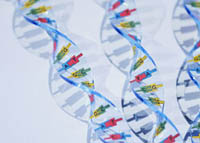 The
horse Prometea demonstrates the difficulty of cloning. After all, only
1 of 800 eggs in the experiment actually produced a successful result,
and this was undoubtedly after the complete failure of previous trials.
The
horse Prometea demonstrates the difficulty of cloning. After all, only
1 of 800 eggs in the experiment actually produced a successful result,
and this was undoubtedly after the complete failure of previous trials.
To uncover the details of how clones are made, tour the University of Utah's Genetic Science Learning Center to explore Cloning in Focus.
Make your first stop the What is Cloning? section, then read up on the Cloning Myths. What's the difference between Artificial Embryo Twinning and Somatic Cell Nucleus Transfer? Do you think most people do or don't believe the myths are true?
Next do a little time traveling here at The Clone Zone, where you can explore the scientific history using the space shuttle or the Cloning Timeline Navigator.
What was the first animal that was cloned and when did it happen? What did scientists learn from cloning a salamander?
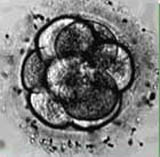 What
did President Bill Clinton do in response to Dolly's success? How do
similar advances in this realm of genetic research and development influence
social and political change? In what ways do our political and community
leaders, as well as society as a whole, affect the scientists, their
current projects, and their future proposals?
What
did President Bill Clinton do in response to Dolly's success? How do
similar advances in this realm of genetic research and development influence
social and political change? In what ways do our political and community
leaders, as well as society as a whole, affect the scientists, their
current projects, and their future proposals?
Now you get to be the scientist, so go to the Click and Clone lab to get started on cloning your own mouse. Review your supply list then follow the procedure. What did you do with the nuclei of the cells? How did you stimulate cell division? What color is your Mini-Mimi and why?
Your last stop is the scientist's lounge to play the Is it Cloning? Or Not? game. Use the controller to move to the Next screen and to choose your answer, Cloning or Not, for each of the seven scenarios. How did you do? Did any of the scenarios trip you up at all? If so, what exactly made determining the right answer difficult?
Newspaper Activities
Browse a current issue of Targetnewspaper to find articles about cloning or other types of genetic manipulation. Does the story — either through words or using a graphic — explain the science behind the news? Have any politicians, religious leaders or other figures commented on the news? If so, what are their reactions? Do the people interviewed by the reporter offer varying opinions or judgments? In what ways do or may people's views affect the future of the featured news? Whose opinions or social positions may hold the most sway over which way the scientific endeavor goes from here?
© Copyright 2003
Learners Online, Inc.
